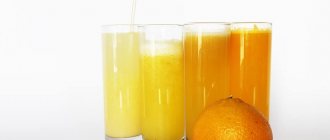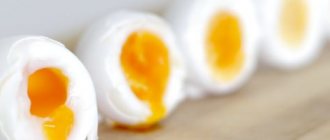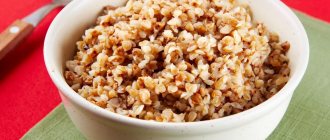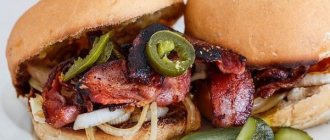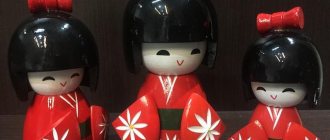Stop dreaming about a flat tummy! The Estonian diet will help you reduce your size and lose 6 kg in just a week! Without harm to muscles, with affordable products! Get a menu, a recipe for Estonian soup and improve yourself!
- Reviews from those who have lost weight
Author: Kristina Lobanovskaya, doctor, practicing nutritionist Article updated: 11/10/2020
Ask a Question
Among the abundance of diets offered, the highly effective Estonian diet, which has recently become quite popular, attracts attention. This express diet is effective, but quite strict. Its main advantage is rapid weight loss: in a week this figure is 4–6 kg.
However, the specifics of this weight loss method should be taken into account. There is only one product in the diet every day; this determines not only the extremely low calorie content, but also the specific chemical composition of the substances entering the body. Sometimes this type of nutrition is presented as a mono-diet cycle, which is true. Due to the absence of seasonings and salt in the diet, excess fluid is eliminated from subcutaneous reserves, and this ensures stable weight loss. The average daily calorie intake while following the Estonian diet is 760 kcal.
Weight loss occurs rapidly and becomes noticeable from the first day of the diet. If in the first days the weight loss occurs mainly due to fluid loss and cleansing of the intestines, then, starting from the third day, it is due to the breakdown of the subcutaneous fat layer. By the end of the week, there is a clear decrease in the volume of the waist, buttocks, and inner thighs. This course is especially effective for those who want to achieve a flat stomach.
The essence of the diet
Most overweight girls and women experience moral and physical difficulties caused by an imperfect figure. If the problem is not related to hormonal disorders or the postpartum period, then you can try to get in shape through sports.
But what to do when you need to fit into your favorite dress in the very near future, since a special event is planned? In this case, you can resort to fast diets, and the Estonian one will help with this.
To get closer to ideal forms, you need to:
- remove sugar and salt from your diet;
- Divide the daily food intake into 5-6 servings;
- eat your last meal no later than 4 hours before bedtime;
- in case of severe hunger, add 500 g of radishes, carrots, cucumbers to the diet;
- drink at least 2 liters of water per day, preferably green tea or still mineral water;
- drink 250 ml of water before meals;
- take leisurely walks in the fresh air and play sports.
Following these simple rules will allow you to get rid of excess weight and look at your reflection in the mirror with pleasure.
Advantages and disadvantages
This nutritional method has its advantages and disadvantages, which you should familiarize yourself with before going on a diet.
Advantages:
- rapid weight loss in a short period of time;
- removal of harmful substances, waste and toxins, as well as excess fluid from the body;
- reduction in waist size.
Flaws:
- the wrong way out of the diet leads to the return of lost kilograms;
- constant feeling of hunger;
- presence of contraindications and side effects.
Permitted and prohibited products
During the diet you can eat the following foods:
- boiled chicken eggs;
- low-fat cottage cheese;
- chicken or lean fish;
- green apples;
- brown rice;
- potato.
Strictly prohibited:
- margarine and spread;
- spices, seasonings and seasonings;
- salt;
- granulated sugar;
- carbonated drinks;
- alcohol;
- oils: vegetable and butter.
Well, don’t such restrictions scare you? Then let's start losing weight!
The Estonian diet menu for 7 days consists of fruits and vegetables
Peculiarities
The original approach to weight loss offered by this type of nutrition has a number of individual factors unique to it. To figure out whether it is acceptable for you, you need to know what main points characterize it.
Advantages
- Since each day's menu consists of only one product, purchasing ingredients becomes extremely simple.
- The products that form the basis of the diet are easy to buy at the market, supermarket or store.
- The cost of food is quite affordable.
- The Estonian type of food does not imply complex recipes that require spending a lot of time on cooking. By adhering to this diet, there is no need to spend your leisure time in the kitchen.
- Typically, when losing weight, dystrophy of a certain percentage of muscle fibers often occurs. The Estonian diet contains a sufficient amount of protein food, and this eliminates sagging in the biceps, triceps and abdominal muscles, which often appear after severe dietary restrictions.
- This type of nutrition provides not only weight loss, but also effective cleansing of the intestines from accumulated waste and toxins, which causes the health of the entire body.
- The presence of protein foods initiates the production of the necessary levels of serotonin and cortisol, which provide a good mood and a feeling of vigor. This circumstance makes the diet somewhat easier.
Flaws
- The Estonian diet is not suitable for those who find it difficult to tolerate dietary restrictions. Since it is low-calorie, the feeling of hunger is acute, and it is quite difficult to suppress appetite.
- The proposed diet is difficult to tolerate by the human body and is not suitable for everyone.
- Discomfort may occur, which is expressed in dizziness, headaches, abdominal pain, difficulty falling asleep and mood swings, and general weakness.
- After a sharp increase in the speed of the body’s metabolic processes, there is an inevitable slowdown, which does not have the best effect on metabolism at the end of the course.
- This technique is characterized by a sharp return to previous weight, and therefore weight loss is temporary; it is effective as a first step in the transition to a longer-term fat burning system.
If the unpleasant sensations become too obvious and interfere with continued weight loss, it is possible to make meals more fractional: redistribute the daily amount of food into 5-6 meals. As a last resort, you can supplement your daily diet with 0.5 kg of green vegetables. If this measure does not bring the desired results, then you should stop losing weight. This should be done gradually, increasing the calorie content of food by approximately 200 kcal daily so that the body does not receive additional stress.
Rules of the Estonian diet
In order to achieve maximum results and not cause harm to your health, you need to adhere to certain rules:
- Over the course of several days before the event, you should gradually reduce the daily calorie content of your meals, cutting down on portion sizes. This measure is necessary so that a low-calorie diet does not plunge the body into a state of stress.
- Every day is mono-food, that is, the entire diet of the day consists of a single product.
- You cannot eat foods from the prohibited list.
- The consumption of alcoholic beverages is contraindicated.
- Be sure to drink enough liquid (at least 2 liters). You can drink pure mineral water without gas, weak black and green tea without sugar, herbal infusions, rosehip decoction.
- Divide the entire daily set of products into three meals: breakfast, lunch and dinner.
- Do not have dinner long before bedtime, so that the feeling of hunger does not interfere with sleep: this increases the risk of early termination of the diet.
List of prohibited products
When adhering to the Estonian nutrition course, it is necessary to remember that there are a number of products that can sharply slow down the progress of weight loss and disrupt metabolic processes from a given pace, and this will immediately affect the reduction in the rate of metabolism and the breakdown of fat deposits. These products cannot be included in the diet and used as components for dishes:
- Salt.
- Margarine and spread.
- Butter.
- Vegetable oil.
- Seasonings and spices.
- Sugar.
Estonian diet menu
Below we will talk about a sample diet menu for 6 and 7 days. Follow the suggested menu strictly to achieve the desired results.
Menu for 6 days
A sample menu is indicated for the whole day:
- Monday - green tea, 6 boiled eggs, which must be eaten in 6 meals.
- Tuesday - 0.5 kg of cottage cheese with 1% fat content. Eat 100 g in 5 doses.
- Wednesday - 0.7 g of boiled chicken breast, divided into 5 servings and eaten throughout the day.
- Thursday - 0.2 kg cooked brown rice, divided into 5 servings. Eat during the day.
- Friday - 6 medium potatoes, boiled in their jackets. Eat 1 potato 6 times.
- Saturday - any number of green apples.
Menu for 7 days
There are several varieties of the Estonian weekly diet. In the first option, you repeat the same menu as for 6 days. On day 7 you drink only 1.5 liters of kefir with 0% fat content.
The second menu option involves eating various foods, vegetable soup (its recipe will be given below). Here is a sample diet menu for 7 days:
- Monday - unlimited fruits, except bananas, vegetable soup.
- Tuesday - boiled and fresh vegetables (except legumes), vegetable soup.
- Wednesday - vegetable soup, any amount of fruits and vegetables, with the exception of legumes, potatoes and bananas.
- Thursday - 8 glasses of low-fat milk, 5-6 bananas, any amount of vegetable soup.
- Friday - 6 tomatoes, 350 g lean beef, any amount of vegetable soup. If desired, you can drink up to 1 liter of mineral water without gases.
- Saturday - vegetable soup, vegetables and beef.
- Sunday - unsweetened tea and coffee, vegetable soup, freshly squeezed juice, boiled rice and root vegetables.
The recipe for making vegetable soup is described below.
You will need:
- carrots - 4 pcs;
- onion - 6 heads;
- bell pepper - 2 pcs;
- bouillon cubes - 6 pcs;
- water - 2.5-3 l;
- small cabbage - 1 piece;
- tomatoes - 0.4 kg;
- parsley root - 1 pc.
How to cook:
- Wash all vegetables, then chop finely.
- Pour boiling water over the food, add broth cubes.
- Cook over low heat until cooked (vegetables should be soft).
- Cool, beat the mixture with a blender if desired.
Dish recipes
Below are recipes for dishes that are used in the menu for 6 days.
Scrambled eggs
You will need:
- water - 500-700 ml;
- eggs - 6 pieces.
How to cook:
- Wash the eggs.
- Pour water into a saucepan and place the eggs in it.
- Place the container on the stove and turn on medium heat.
- After the water boils, wait 1 minute and 40 seconds, then turn off the stove.
- Remove the eggs from the pan and place under cold running water.
Boiled chicken meat
You will need:
- chicken breast - 0.7 kg;
- water - 1.5-2 l.
How to cook:
- Wash the breast, place it in a pan, and fill it with water.
- Place the container on the fire.
- Before boiling, skim off any foam that has formed.
- After 30 minutes, check the meat for doneness by piercing it with a knife in 2-3 places.
- If the meat is cooked, remove the pan from the heat.

Photo of cooked brown rice
Boiled rice
You will need:
- water - 1 l;
- brown rice - 0.2 kg.
How to cook:
- Rinse the rice under cold water.
- Bring the water to a boil, then pour the rice into it.
- Cook for 20 minutes, stirring regularly.
- Once the rice has softened and increased in size, turn off the heat, then rinse the rice under cold water.
Jacket potatoes
You will need:
- potatoes - 6 pcs;
- water - 1.5-2 l.
How to cook:
- Take potatoes of the same size and rinse them thoroughly under running water.
- Place the food in a saucepan and cover with cold water.
- Place the container on the stove.
- Cook the potatoes for half an hour after boiling, checking with a knife for doneness.
- When the potatoes are ready, remove the pan from the stove and drain off any remaining liquid.
Contraindications
The Estonian diet is classified as strict, and therefore has some restrictions on compliance.
It is not recommended to use this weight loss technique in the following cases:
- the presence of chronic pathologies;
- menstruation;
- pregnancy;
- lactation period;
- rehabilitation period after serious illnesses and operations;
- weak immunity;
- mental disorders;
- childhood, adolescence and old age;
- gastrointestinal dysfunction;
- excessive physical activity;
- pathologies of the cardiac system.
In some cases, side effects may occur, including:
- constipation;
- irritability;
- inhibited state;
- sudden jumps in blood pressure;
- migraine;
- insomnia;
- drowsiness;
- painful sensations in the abdomen;
- prostration.
If these manifestations are present, it is recommended to refrain from dieting. It is also advisable to consult a nutritionist.

The right way out of the diet is the key to a slim figure
What do the experts say?
Doctors say that in order for the weight loss process to be harmless, weight must be lost gradually. In this regard, the Estonian diet is far from ideal, since rapid weight loss can lead to an exacerbation of many chronic diseases. Moreover, a lack of salt in the diet can cause dehydration and more intense removal of fluid from the body, which, accordingly, will increase the load on the excretory system many times over.
In terms of nutritional value, the diet is not balanced, and therefore leads to a deterioration in well-being (despite even a large amount of proteins), vitamin deficiency, impaired immunity and other unpleasant effects described above. A diet with less than 1,300 calories causes upset and slow metabolism.
What can we say about the range of diseases that the described technique can lead to?
Quitting the diet
The right way out of the diet is the key to ensuring that the lost weight does not return to you after you stop adhering to dietary restrictions. In this case, the simplest and most accurate way would be to count the calorie content of the foods consumed (no more than 1500-1700 kcal per day). Eat protein foods and drink as much pure water or unsweetened green tea as possible.
Make sure that the following foods are present in your diet for 1-2 weeks after stopping the diet:
- green vegetables;
- fruits;
- low-fat dairy products;
- porridge cooked in water, without adding butter;
- lean meat (chicken, veal, turkey);
- boiled or baked low-fat sea fish.
Do not consume the prohibited foods that we wrote about above. Compliance with such a menu will allow you to consolidate the results obtained and prevent excess body weight gain in the future.
How to cook
The menu is quite simple and does not require the preparation of complex dishes. It is recommended to boil or grill seafood. Potatoes for potato day can be eaten boiled or baked; you should not fry them in large amounts of oil. Interesting recipes are presented in the article “Boiled Potato Diet”.
When preparing brown rice dishes, the use of vegetable oil is allowed. Apples can be baked in the oven. Dairy products, if desired, can be consumed warmed. What you can and cannot eat on a diet
When following the Estonian diet, you can consume:
- cottage cheese of any fat content;
- kefir of any fat content;
- squid, shrimp, mussels;
- cow's milk;
- low-fat fish: cod, navaga, hake, pollock, blue whiting;
- chicken egg white;
- green apples;
- Brown rice;
- potato;
- fresh cucumbers, onions, carrots, greens;
- natural yogurt without sugar;
- vegetable oils.
The amount of vegetable oil, sunflower or olive, should be minimal. For example, you can grease a baking sheet in the oven with it when preparing cutlets, or a frying pan for an omelette.
Here's what you can't eat:
- any meat, fatty fish, all canned meat and fish and semi-finished products;
- bread, muffins, pastries and sweets;
- all grains except brown rice;
- all fruits except lemon, its juice is recommended to be added to drinking water;
- butter, margarine. mayonnaise and other store-bought sauces.
You will also have to refrain from visiting cafes and restaurants. It is much easier to control the quality of self-prepared dishes.
Reviews
Below are reviews from doctors and those who have lost weight on the Estonian diet. We invite you to familiarize yourself with them.
Valery, nutritionist
Every person should understand that quick diets do not bring long-term results. As soon as you return to your previous diet, the lost weight will immediately return. Therefore, it is important to exercise and not get carried away with salty, fried, fatty foods, so as not to gain weight.
Valentina, therapist
Any diet is stressful for the body. Therefore, you should gradually prepare for weight loss. To begin with, reduce the size of portions, and then gradually eliminate harmful foods. Yes, the Estonian diet will help you lose weight, but if you continue to eat the same way, all the lost pounds will return to your waist and hips.
Marika, 32 years old
I went on the Estonian diet twice. I sat down for the first time a week before my birthday, I was able to withstand only 6 days of the diet, and lost 5 kg. I followed it for the second time before the New Year, I really wanted to look slim! I lost 6 kg in a week, there were no side effects.
Angelica, 26 years old
A friend recommended the Estonian diet to me; with its help, she lost 4 kg in 6 days. To be honest, I didn’t like this diet at all; while following it, I suffered from headaches and general weakness. But in a week I lost as much as 7 kg. So, you can tolerate side effects if you want to have a beautiful figure.
The Estonian diet is a strict nutrition system that allows you to lose 3-6 kg in a week. You can only follow it if you are completely healthy and well motivated! In all other cases, we recommend paying attention to the diet of doctors and Awesome, weight loss with activated charcoal, as well as nutrition according to blood type.
Flaws
In addition to its advantages, the Estonian diet also has negative reviews from those who have lost weight:
- Difficulties may arise for those who are not used to limiting their food intake.
- A low-calorie diet makes you feel hungry.
- The diet is not suitable for sick and weakened people.
- Dizziness, headaches, weakness are possible.
- The technique leads to temporary weight loss if you do not subsequently reconsider your diet.
- With fairly good results regarding weight loss, it is worth noting that the diet is quite strict. It takes a lot of willpower to be able to eat one food item throughout the day.
- In addition, the volume of permitted products is not large, and this causes a feeling of hunger. If you previously ate heavily (which is typical for most people who are overweight), this unpleasant phenomenon is unlikely to bypass you.
- Due to the small amount of allowed food and strict restrictions, following the rules of the Estonian diet may be accompanied by weakness, fatigue, emotional problems (frequent mood swings, apathy), headaches, and dizziness. If you experience this yourself, be sure to stop the diet so as not to cause serious damage to the body. After all, in this way he simply shouts that the chosen method of nutrition does not suit him at all.
- It is very important to exit the diet correctly, since noticeable restrictions in the diet can cause the frightened body to quickly begin to accumulate incoming food into fat deposits.
